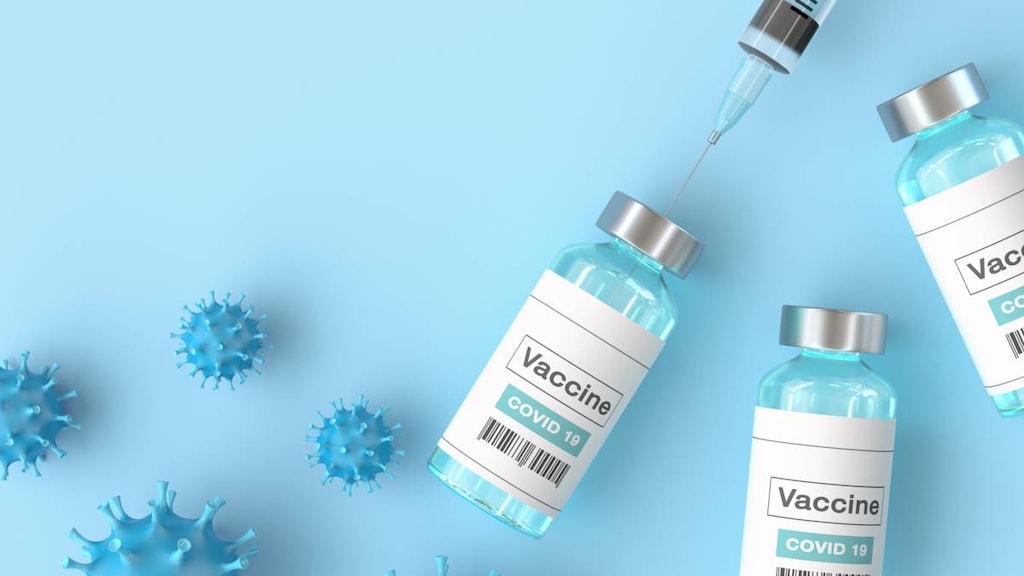Boxed Warning
Serious infections:
Patients treated with baricitinib are at risk for developing serious infections that may lead to hospitalization or death. Most patients who developed these infections were taking concomitant immunosuppressants such as methotrexate or corticosteroids. If a serious infection develops, interrupt baricitinib until the infection is controlled.
Reported infections include:
- Active tuberculosis, which may present with pulmonary or extrapulmonary disease; patients should be tested for latent tuberculosis before initiating baricitinib and during therapy; treatment for latent infection should be considered prior to baricitinib use
- Invasive fungal infections, including candidiasis and pneumocystosis; patients with invasive fungal infections may present with disseminated, rather than localized, disease
- Bacterial, viral, and other infections due to opportunistic pathogens
The risks and benefits of treatment with baricitinib should be carefully considered prior to initiating therapy in patients with chronic or recurrent infection. Patients should be closely monitored for the development of signs and symptoms of infection during and after treatment with baricitinib including the possible development of tuberculosis in patients who tested negative for latent tuberculosis infection prior to initiating therapy.
Malignancies:
Lymphoma and other malignancies have been observed in patients treated with baricitinib.
Thrombosis:
Thrombosis, including deep venous thrombosis and pulmonary embolism, has been observed at an increased incidence in patients treated with baricitinib compared to placebo. In addition, there were cases of arterial thrombosis. Many of these adverse events were serious and some resulted in death. Patients with symptoms of thrombosis should be promptly evaluated.
Dosage Forms
Excipient information presented when available (limited, particularly for generics); consult specific product labeling.
Tablet, Oral:
Olumiant: 1 mg, 2 mg [contains soybean lecithin]
Pharmacology
Mechanism of Action
Baricitinib inhibits Janus kinase (JAK) enzymes, which are intracellular enzymes involved in stimulating hematopoiesis and immune cell function through a signaling pathway. In response to extracellular cytokine or growth factor signaling, JAKs activate signal transducers and activators of transcription (STATs), which regulate gene expression and intracellular activity. Inhibition of JAKs prevents the activation of STATs and reduces serum IgG, IgM, IgA, and C-reactive protein.
Pharmacokinetics/Pharmacodynamics
Distribution
Vd: 76 L
Metabolism
Hepatic, primarily via CYP3A4
Excretion
Urine: ~75% (69% as unchanged drug); feces: ~20% (15% as unchanged drug)
Time to Peak
~1 hour
Half-Life Elimination
~12 hours
Protein Binding
~50% (plasma proteins); 45% (serum proteins)
Use in Specific Populations
Special Populations: Renal Function Impairment
AUC increased by 1.41-, 2.22-, 4.05- and 2.41-fold for mild, moderate, and severe renal impairment, and ESRD (with hemodialysis), respectively.
Special Populations: Hepatic Function Impairment
For moderate hepatic impairment, AUC and Cmax increased by 1.19- and 1.08-fold, respectively.
Use: Labeled Indications
Rheumatoid arthritis: Treatment of adult patients with moderately to severely active rheumatoid arthritis who have had an inadequate response to one or more tumor necrosis factor antagonist therapies.
Limitation of use: Use of baricitinib in combination with other JAK inhibitors, biologic DMARDs, or with potent immunosuppressants such as azathioprine and cyclosporine is not recommended.
Contraindications
There are no contraindications listed in the manufacturer's labeling.
Dosage and Administration
Dosing: Adult
Note: Baricitinib should not be used in combination with biologic disease-modifying antirheumatic drugs (DMARDs) or with strong immunosuppressants such as azathioprine or cyclosporine. Do not initiate therapy in patients with an absolute lymphocyte count <500 cells/mm3, absolute neutrophil count <1,000 cells/mm3, or hemoglobin <8 g/dL.
Rheumatoid arthritis (monotherapy or in combination with methotrexate or nonbiologic DMARDs): Oral: 2 mg once daily.
Dosage adjustment for concomitant strong organic anion transporter 3 inhibitors (eg, probenecid): 1 mg once daily.
Dosing: Geriatric
Refer to adult dosing.
Dosing: Adjustment for Toxicity
Infection: If a patient develops a serious infection, interrupt treatment until the infection is controlled.
Lymphopenia (lymphocytes ≥500 cells/mm3): Maintain dose.
Lymphopenia (lymphocytes <500 cells/mm3): Interrupt therapy until absolute lymphocyte count ≥500 cells/mm3.
Neutropenia (ANC ≥1,000 cells/mm3): Maintain dose.
Neutropenia (ANC <1,000 cells/mm3): Interrupt therapy until ANC ≥1,000 cells/mm3.
Anemia (hemoglobin ≥8 g/dL): Maintain dose.
Anemia (hemoglobin <8 g/dL): Interrupt therapy until hemoglobin ≥8 g/dL.
Administration
Oral: May be administered with or without food.
Storage
Store at 20°C to 25°C (68°F to 77°F); excursions permitted to 15°C to 30°C (59°F to 86°F).
Drug Interactions
BCG (Intravesical): Immunosuppressants may diminish the therapeutic effect of BCG (Intravesical). Avoid combination
BCG (Intravesical): Myelosuppressive Agents may diminish the therapeutic effect of BCG (Intravesical). Avoid combination
Belimumab: May enhance the immunosuppressive effect of Biologic Disease-Modifying Antirheumatic Drugs (DMARDs). Avoid combination
Biologic Disease-Modifying Antirheumatic Drugs (DMARDs): May enhance the immunosuppressive effect of other Biologic Disease-Modifying Antirheumatic Drugs (DMARDs). Avoid combination
Chloramphenicol (Ophthalmic): May enhance the adverse/toxic effect of Myelosuppressive Agents. Monitor therapy
Cladribine: May enhance the immunosuppressive effect of Immunosuppressants. Avoid combination
Cladribine: May enhance the myelosuppressive effect of Myelosuppressive Agents. Avoid combination
CloZAPine: Myelosuppressive Agents may enhance the adverse/toxic effect of CloZAPine. Specifically, the risk for neutropenia may be increased. Monitor therapy
Coccidioides immitis Skin Test: Immunosuppressants may diminish the diagnostic effect of Coccidioides immitis Skin Test. Monitor therapy
Deferiprone: Myelosuppressive Agents may enhance the neutropenic effect of Deferiprone. Management: Avoid the concomitant use of deferiprone and myelosuppressive agents whenever possible. If this combination cannot be avoided, monitor the absolute neutrophil count more closely. Consider therapy modification
Denosumab: May enhance the adverse/toxic effect of Immunosuppressants. Specifically, the risk for serious infections may be increased. Monitor therapy
Dipyrone: May enhance the adverse/toxic effect of Myelosuppressive Agents. Specifically, the risk for agranulocytosis and pancytopenia may be increased Avoid combination
Echinacea: May diminish the therapeutic effect of Immunosuppressants. Consider therapy modification
Fingolimod: Immunosuppressants may enhance the immunosuppressive effect of Fingolimod. Management: Avoid the concomitant use of fingolimod and other immunosuppressants when possible. If combined, monitor patients closely for additive immunosuppressant effects (eg, infections). Consider therapy modification
Immunosuppressants: May enhance the immunosuppressive effect of Baricitinib. Management: Use of baricitinib in combination with potent immunosuppressants such as azathioprine or cyclosporine is not recommended. Concurrent use with antirheumatic doses of methotrexate or nonbiologic disease modifying antirheumatic drugs (DMARDs) is permitted. Consider therapy modification
Leflunomide: Immunosuppressants may enhance the adverse/toxic effect of Leflunomide. Specifically, the risk for hematologic toxicity such as pancytopenia, agranulocytosis, and/or thrombocytopenia may be increased. Management: Consider not using a leflunomide loading dose in patients receiving other immunosuppressants. Patients receiving both leflunomide and another immunosuppressant should be monitored for bone marrow suppression at least monthly. Consider therapy modification
Mesalamine: May enhance the myelosuppressive effect of Myelosuppressive Agents. Monitor therapy
Natalizumab: Immunosuppressants may enhance the adverse/toxic effect of Natalizumab. Specifically, the risk of concurrent infection may be increased. Avoid combination
Nitisinone: May increase the serum concentration of OAT1/3 Substrates. Monitor therapy
Nivolumab: Immunosuppressants may diminish the therapeutic effect of Nivolumab. Consider therapy modification
Pidotimod: Immunosuppressants may diminish the therapeutic effect of Pidotimod. Monitor therapy
Pimecrolimus: May enhance the adverse/toxic effect of Immunosuppressants. Avoid combination
Pretomanid: May increase the serum concentration of OAT1/3 Substrates. Monitor therapy
Probenecid: May increase the serum concentration of Baricitinib. Management: Decrease the dose of baricitinib to 1 mg daily when combined with probenecid. Consider therapy modification
Promazine: May enhance the myelosuppressive effect of Myelosuppressive Agents. Monitor therapy
Roflumilast: May enhance the immunosuppressive effect of Immunosuppressants. Consider therapy modification
Sipuleucel-T: Immunosuppressants may diminish the therapeutic effect of Sipuleucel-T. Management: Evaluate patients to see if it is medically appropriate to reduce or discontinue therapy with immunosuppressants prior to initiating sipuleucel-T therapy. Consider therapy modification
Smallpox and Monkeypox Vaccine (Live): Immunosuppressants may diminish the therapeutic effect of Smallpox and Monkeypox Vaccine (Live). Monitor therapy
Tacrolimus (Topical): May enhance the adverse/toxic effect of Immunosuppressants. Avoid combination
Tertomotide: Immunosuppressants may diminish the therapeutic effect of Tertomotide. Monitor therapy
Tolvaptan: May increase the serum concentration of OAT1/3 Substrates. Management: Patients being treated with the Jynarque brand of tolvaptan should avoid concomitant use of OAT1/3 substrates. Concentrations and effects of the OAT1/3 substrate would be expected to increase with any combined use. Consider therapy modification
Trastuzumab: May enhance the neutropenic effect of Immunosuppressants. Monitor therapy
Vaccines (Inactivated): Immunosuppressants may diminish the therapeutic effect of Vaccines (Inactivated). Management: Vaccine efficacy may be reduced. Complete all age-appropriate vaccinations at least 2 weeks prior to starting an immunosuppressant. If vaccinated during immunosuppressant therapy, revaccinate at least 3 months after immunosuppressant discontinuation. Consider therapy modification
Vaccines (Live): Immunosuppressants may enhance the adverse/toxic effect of Vaccines (Live). Immunosuppressants may diminish the therapeutic effect of Vaccines (Live). Management: Avoid use of live organism vaccines with immunosuppressants; live-attenuated vaccines should not be given for at least 3 months after immunosuppressants. Exceptions: Smallpox and Monkeypox Vaccine (Live). Avoid combination
Adverse Reactions
>10%: Respiratory: Upper respiratory tract infection (16%)
1% to 10%:
Gastrointestinal: Nausea (3%)
Hepatic: Increased serum alanine aminotransferase (≥3 x ULN) (2%), increased serum aspartate aminotransferase (≥3 x ULN) (1%)
Infection: Herpes zoster infection (1%)
Frequency not defined:
Endocrine & metabolic: Increased HDL cholesterol, increased LDL cholesterol, increased serum cholesterol, increased serum triglycerides
Hematologic & oncologic: Anemia, lymphocytopenia
Hepatic: Increased liver enzymes
Neuromuscular & skeletal: Increased creatine phosphokinase
Renal: Increased serum creatinine
<1%, postmarketing, and/or case reports: Acne, arterial thrombosis, bacterial infection, BK virus, CMV viremia, cryptococcosis, deep vein thrombosis, esophageal candidiasis, fungal infection, gastrointestinal perforation, herpes virus infection, histoplasmosis, neutropenia, malignant neoplasm, mycobacterium infection, opportunistic infection, pneumonia, pneumonia due to Pneumocystis jirovecii, pulmonary embolism, skin carcinoma, tuberculosis, urinary tract infection, venous thromboses, viral infection
Warnings/Precautions
Concerns related to adverse effects:
- GI perforations: Use with caution in patients at increased risk for GI perforation (eg, history of diverticulitis); perforations have been reported in clinical trials. Promptly evaluate new-onset abdominal symptoms in patients taking baricitinib.
- Hematologic toxicity: Hematologic toxicity, including lymphopenia, anemia, and neutropenia, may occur and is generally reversible and managed by treatment interruption. Do not initiate therapy in patients with an absolute lymphocyte count <500 cells/mm3, absolute neutrophil count <1,000 cells/mm3, or hemoglobin <8 g/dL. Monitor complete blood counts at baseline and periodically thereafter.
- Hepatic effects: Increased incidence of liver enzyme elevation (≥5 × ULN for ALT and ≥10 × ULN for AST) was observed in patients taking baricitinib. Monitor LFTs as clinically indicated; interrupt therapy if LFTs are increased and drug-induced liver injury is suspected.
- Infections: [US Boxed Warning]: Patients receiving baricitinib are at increased risk for serious infections, which may result in hospitalization and/or fatality; infections often developed in patients receiving concomitant immunosuppressive agents (eg, methotrexate, corticosteroids). Active tuberculosis (pulmonary or extrapulmonary), invasive fungal (including candidiasis and pneumocystosis [may present as disseminated rather than local disease]) and bacterial, viral, or other opportunistic infections (including esophageal candidiasis, multidermatomal herpes zoster, acute histoplasmosis, cryptococcosis, cytomegalovirus infections, and BK virus infection) have been reported in patients receiving baricitinib. Closely monitor patients for the development of signs/symptoms of infection during and after baricitinib treatment. If a serious infection develops, interrupt baricitinib until the infection is controlled. Carefully consider the risks and benefits of treatment with baricitinib prior to initiating therapy in patients with chronic or recurrent infection. Do not initiate baricitinib in patients with active, serious infections, including localized infections. The most common serious infections reported included pneumonia, urinary tract infections, and herpes zoster infections, although other serious infections may occur. Reactivation of viral infections (eg, herpes zoster) was observed in clinical trials; the impact of baricitinib on chronic viral hepatitis reactivation is unknown. If a patient develops herpes zoster, interrupt therapy until episode is resolved. Screen for viral hepatitis. Consultation with a hepatologist may be necessary if hepatitis B virus DNA is detected.
- Lipid abnormalities: Dose-dependent increases in lipid parameters (eg, total, low-density lipoprotein, and high-density lipoprotein cholesterol) were observed in patients receiving baricitinib; maximum lipid increases were typically seen within 12 weeks of initiation. Assess lipids 12 weeks after baricitinib initiation and manage lipid abnormalities accordingly.
- Malignancy: [US Boxed Warning]: Lymphoma and other malignancies have been observed in patients receiving baricitinib. Consider risks versus benefits prior to use in patients with a known malignancy (other than successfully treated nonmelanoma skin cancers [NMSCs]) or when continuing baricitinib in patients who develop a new malignancy. NMSCs have been reported; patients at increased risk for skin cancer should have periodic skin examinations.
- Thrombosis: [US Boxed Warning]: Thrombosis, including deep vein thrombosis (DVT), pulmonary embolism (PE), and arterial thrombosis have been observed; may be serious and life-threatening. Promptly evaluate new-onset symptoms of DVT, PE, or arterial thrombosis. Use with caution in patients with an increased risk of thrombosis.
- Tuberculosis: [US Boxed Warning]: Tuberculosis (TB) (pulmonary or extrapulmonary) has been reported in patients receiving baricitinib. Patients should be evaluated for latent TB infection prior to and during therapy. Treatment of latent TB should be initiated before use. Monitor for development of TB throughout treatment including patients who initially tested negative for latent TB infection prior to initiating therapy. Use with caution in patients who have resided or traveled in regions where TB is endemic. Consider antituberculosis therapy if an adequate course of treatment cannot be confirmed in patients with a history of latent or active TB or for patients with risk factors despite negative skin test.
Concurrent drug therapy issues:
- Drug-drug interactions: Potentially significant interactions may exist, requiring dose or frequency adjustment, additional monitoring, and/or selection of alternative therapy. Consult drug interactions database for more detailed information.
Other warnings/precautions:
- Immunizations: Immunization status should be current before initiating therapy. Live vaccines should not be given concomitantly with baricitinib; recommended interval between receipt of live vaccines and initiation of immunosuppressive agents such as baricitinib should follow current vaccination clinical guidelines.
Monitoring Parameters
Lymphocyte, neutrophil, platelet counts, and hemoglobin and LFTs (baseline and periodically thereafter); lipids (12 weeks after therapy initiation and periodically thereafter); viral hepatitis (prior to initiating therapy in accordance with clinical guidelines); signs/symptoms of infections (including tuberculosis) during and after therapy; abdominal symptoms; skin examinations (periodically, in patients at increased risk for skin cancer)
Pregnancy
Pregnancy Considerations
Adverse events were observed in animal reproduction studies.
Patient Education
What is this drug used for?
- It is used to treat rheumatoid arthritis.
- This drug may be used with other drugs to treat your health condition. If you are also taking other drugs, talk with your doctor about the risks and side effects that may happen.
Frequently reported side effects of this drug
- Common cold symptoms
- Cold sores
Other side effects of this drug: Talk with your doctor right away if you have any of these signs of:
- Infection
- Blood clots like numbness or weakness on one side of the body; pain, redness, tenderness, warmth, or swelling in the arms or legs; change in color of an arm or leg; chest pain; shortness of breath; fast heartbeat; or coughing up blood
- Severe loss of strength and energy
- Mole changes
- Skin growth
- Swollen glands
- Shortness of breath
- Weight loss
- Night sweats
- Severe or persistent abdominal pain
- Severe or persistent abdominal swelling
- Vomiting blood
- Persistent nausea
- Persistent vomiting
- Black, tarry, or bloody stools
- Signs of a significant reaction like wheezing; chest tightness; fever; itching; bad cough; blue skin color; seizures; or swelling of face, lips, tongue, or throat.
Note: This is not a comprehensive list of all side effects. Talk to your doctor if you have questions.
Consumer Information Use and Disclaimer: This information should not be used to decide whether or not to take this medicine or any other medicine. Only the healthcare provider has the knowledge and training to decide which medicines are right for a specific patient. This information does not endorse any medicine as safe, effective, or approved for treating any patient or health condition. This is only a brief summary of general information about this medicine. It does NOT include all information about the possible uses, directions, warnings, precautions, interactions, adverse effects, or risks that may apply to this medicine. This information is not specific medical advice and does not replace information you receive from the healthcare provider. You must talk with the healthcare provider for complete information about the risks and benefits of using this medicine.




